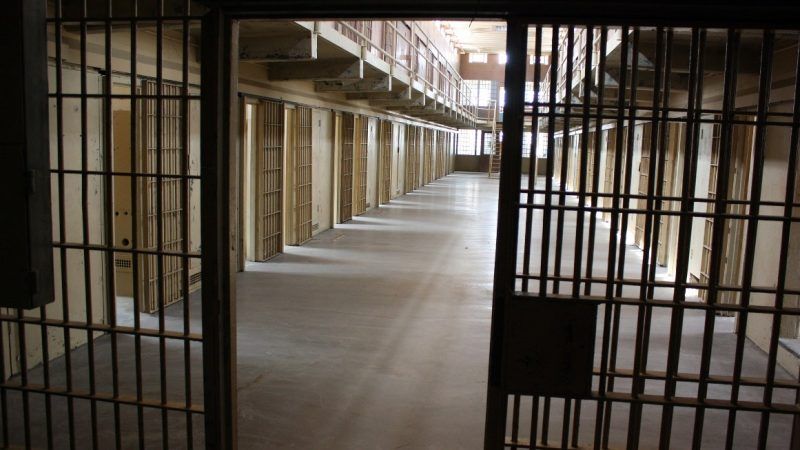The First Federal Female Inmate To Die of COVID-19
Andrea Circle Bear was serving a 2-year sentence for a nonviolent drug crime.

Andrea Circle Bear, 30, is the first female federal inmate to die of COVID-19. She passed away several weeks after being placed on a ventilator and having an emergency cesarean section to deliver her baby.
The Bureau of Prisons (BOP) announced Thursday that Circle Bear had succumbed to complications from the virus, making her the 29th federal inmate to die of COVID-19. The virus has killed 30 federal inmates so far, and 1,314 have tested positive for it.
According to federal court records, Circle Bear was arrested for selling two grams of methamphetamine to a confidential informant out of a residence in the Cheyenne River Sioux Reservation in South Dakota. She pleaded guilty to maintaining a drug-involved premises and was sentenced to 26 months in federal prison.
Circle Bear's sentencing documents say that the judge recommended her for the BOP's substance abuse treatment program. Because she was pregnant, she was sent to FMC Carswell, a federal prison in Fort Worth, Texas, for inmates with medical needs.
On March 28, a little more than a week after she arrived in federal prison, Circle Bear was sent to a local hospital because of potential complications with her pregnancy. She was released the same day, but several days later she reported to prison medical staff with a fever and dry cough. She was transported back to the local hospital and placed on a ventilator. Her baby was delivered via cesarean section on April 1.
The Washington Post reports that her child is now in the care of her family in South Dakota.
In a press release today, Kevin Ring, president of the criminal justice advocacy group FAMM, called Circle Bear's death "a national disgrace." FAMM is also calling for an immediate Justice Department investigation into her death.
"Not every prison death is avoidable, but Andrea Circle Bear's certainly seems to have been — she simply should not have been in a federal prison under these circumstances," Ring said. "In fact, nothing better demonstrates our mindless addiction to punishment more than the fact that, in the midst of a global pandemic, our government moved a 30-year-old, COVID-vulnerable pregnant woman not to a hospital or to her home, but to a federal prison."
None of the federal inmates who have died from COVID-19 were sentenced to death. Many were serving drug sentences. As Reason reported, the first federal inmate to die of COVID-19 was serving a 27-year sentence for a crack cocaine offense.
According to the BOP, Circle Bear had a preexisting medical condition that the CDC lists as risk factor for developing a more severe COVID-19 disease. Neither the South Dakota town she lived near or the surrounding county has had a positive COVID-19 case.
Many prisons and jails across the country have taken unprecedented measures to reduce their populations in response to the pandemic, halting intake of new inmates and releasing others deemed low-risk. In late March, U.S. Attorney General William Barr issued a directive to the BOP to identify and release elderly and at-risk inmates who met certain criteria, either through an early transfer into home confinement or through a policy called compassionate release.
So far, the BOP says it's released 1,751 inmates into home confinement. But the rollout of Barr's directive has been hamstrung by contradictions and confusion.
An unusual alliance of civil liberties groups and correctional officers unions has been warning that these measures won't be nearly enough to protect staff and inmates inside the crowded and filthy conditions that prevail in jails and prisons across the country.
They are unfortunately being proven right.
According to data from The New York Times, eight of the 10 biggest COVID-19 clusters in the U.S. are connected to jails or prisons.


Show Comments (23)